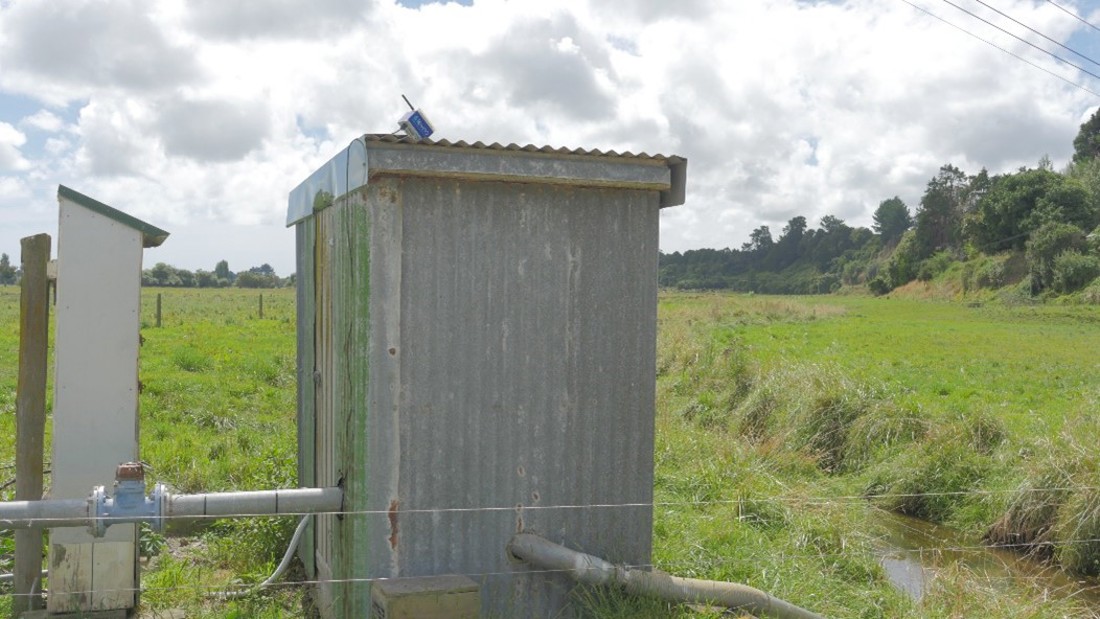Water meters and monitoring
4 min read
Water meters are key in managing your farm's water usage. Costing around $350, water meters will help you spot leaks early,track consumption and are a valuable feature of any farm striving for sustainable water use.
Installing a water meter allows you to record actual water use and identify areas where water can be used more efficiently. This page provides information on the different types of meters and their use and installation, as well as regulatory requirements.
Two main types of water meters are available to monitor shed water use: mechanical and electromagnetic. The cost and accuracy vary between these meters. Mechanical water meters are generally the cheapest upfront, however they need earlier replacement and have poorer accuracy than electromagnetic.
Most mechanical meters have an impeller rotated by water passing through the meter. The amount of turns is translated to a volumetric reading. The meters are available in various sizes, and the pipes on either side of them must be full of water during measurement to ensure they are accurate.

Mechanical water meter.
Advantages
Disadvantages
An electromagnetic meter consists of a section of pipe with a magnetic field around it. Electrodes determine flow based on how the water flow changes the electrical voltage.
This type of meter is produced in various standard sizes and flow capacities.

Electromagnetic water meter.
Advantages
Disadvantages
Irrigation New Zealand's Water Measurement 'Blue Tick' accredited operators are recommended to install water meters (which may be required by your regional council), and can provide advice on the most suitable option.
When deciding which water meter best suits your farm, consider the following questions:
High silt loads, weed issues, sand, pumice, iron or manganese in source water can all affect the performance of a meter. Mechanical flow meters will wear out faster in silty or gritty conditions.
Selecting a meter with the manufacturer's stated and tested standards is essential if you require a specific data accuracy level. Ensure the meter has a maximum accuracy of five per cent. This means that readings are considered within or minus five per cent of the actual flow.
A meter will only be accurate if the manufacturer’s specifications are met, including flow profile, temperature, humidity, flow range and vibration.
Place the water meter in a convenient spot to read or attach a data logger or telemetry unit, which will send the data straight to a computer system.
Consider how the meter’s location will affect the data collected. For example, if you install a meter on the line of a slow-filling tank that gravity feeds, it will constantly show low values, and leaks will be hard to detect. If you put the meter (with telemetry) on the outlet of the water tank, it will be more sensitive to changes in flow. Low leaks can then be detected when the flow is seen outside normal animal drinking hours.
Read meters at the same time and day regularly to ensure readings are consistent. Readings can be recorded on DairyNZ's Tracking Water Use form.
At least once a month, read the meter late in the evening and again early the following day to check for small or unnoticed leaks.
Assigning meter-reading responsibility to one person makes it part of a routine and reduces the chance of it being forgotten.
Record meter readings regularly to track seasonal and yearly farm water use. The industry estimates that typical water use for milking cows is about 140 litres/day (70L for drinking and 70L in the farm dairy).
Weather conditions and feed will affect stock water intake. If overall water use on the farm regularly exceeds 140L/day, it’s worth having a closer look for possible water losses or inefficiencies.

Telemetry monitoring offers continuous electronic monitoring of your water use. Some councils now require this as a condition of consent.
An alert system can tell you if water is flowing when it shouldn’t, allowing quick detection of leaks and speedy repairs. Assign a specific person to monitor the alert devices.
An alert system can be set up using the following methods:
The correct number and placement of isolation valves can ease finding and fixing leaks, and shutting off water in an area to assist in repair. They can also be used to turn off water in areas not always in use, such as the calf shed. Mark isolation valves on your farm map so they can be found if the system needs to be modified.
Consented water that takes over 5 litres per second or more must be measured and reported to regional councils. The water metering regulations were amended in 2020 and now require water takes to be measured every 15 minutes and reported to regional councils daily, which essentially means a telemetered system. If you are upgrading your system or putting in a new system it will need to be able to comply with the reporting requirements.
See water metering regulations for further information.
Now’s the perfect time to check in, plan, and set up for a strong season. We’ve pulled together smart tips and tools to help you stay ahead all winter long.
Whether you prefer to read, listen, or download handy guides, we’ve got you covered with trusted tools to support your journey every step of the way.
Put our proven strategies and seasonal tools to work. Boost production, support animal health and watch your profits hum.
Tools that are backed by science, shaped by farmers and made for this season.
That’s Summer Smarts.